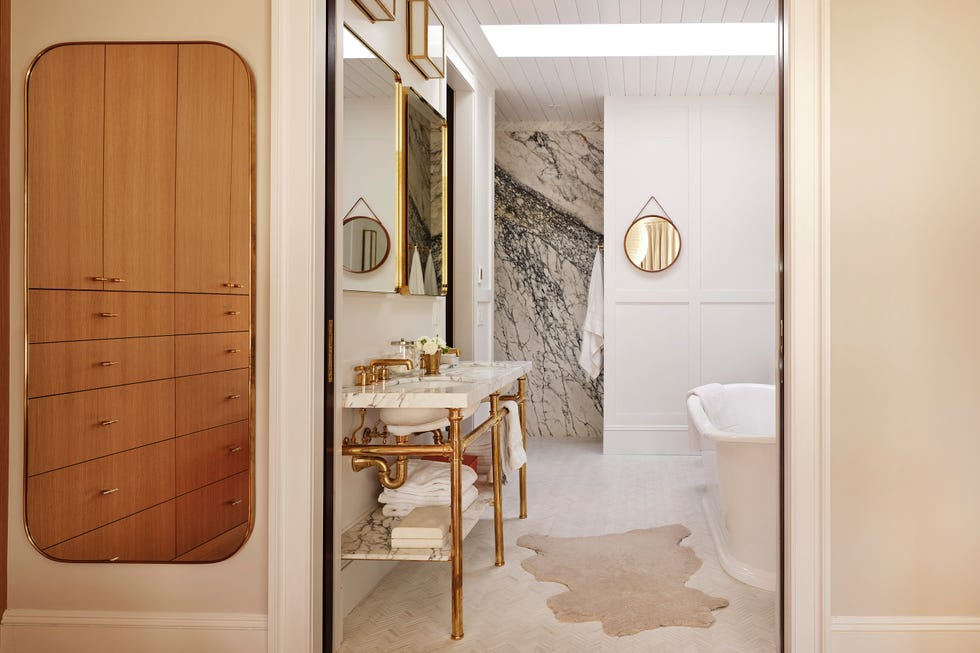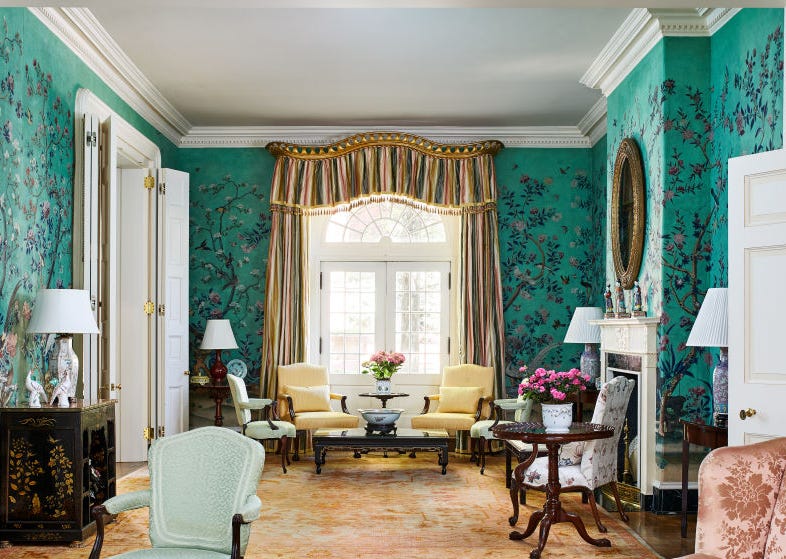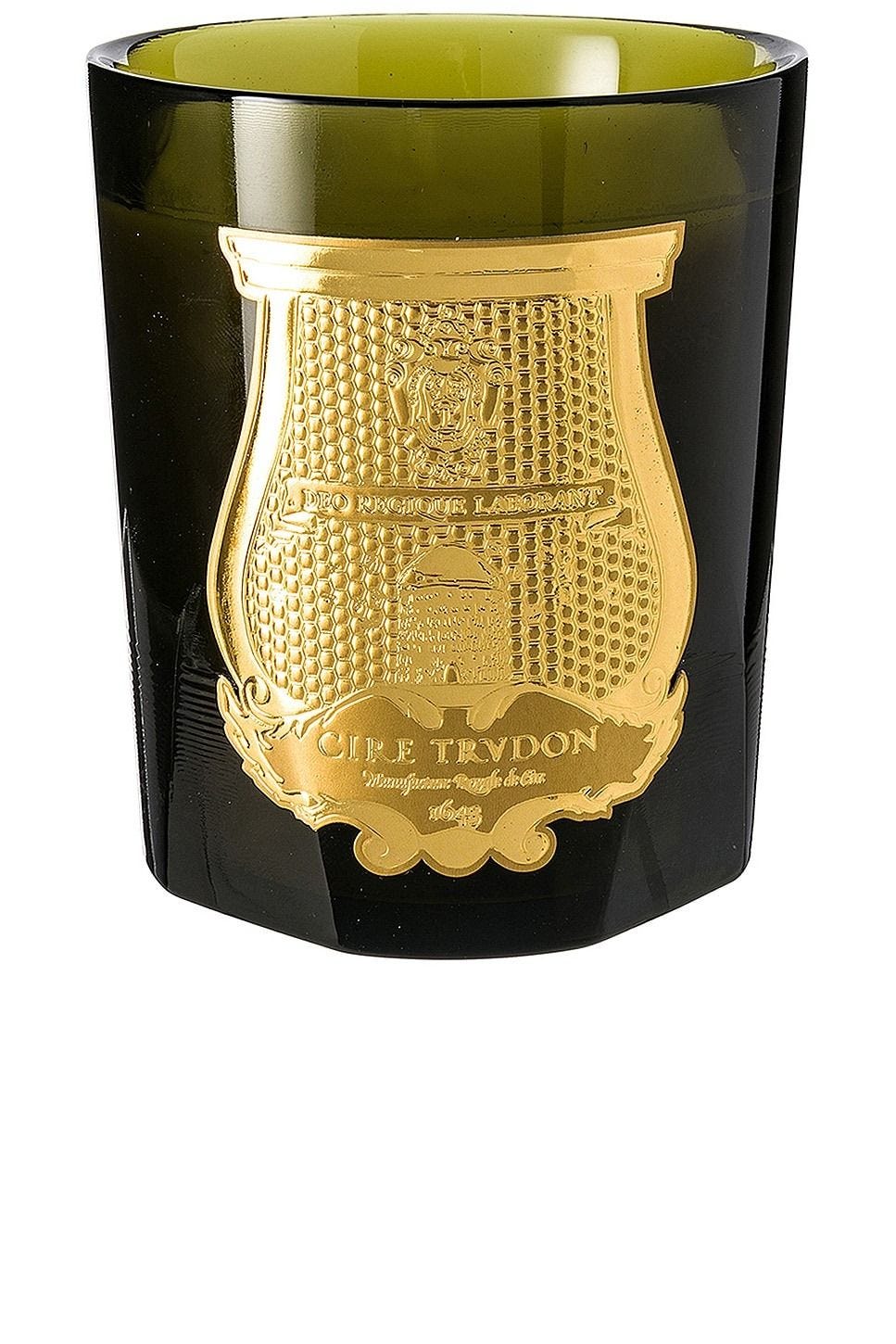When most people hear the word renovation, they break into a cold sweat, imagining endless delays, budget-busting surprises, and decision paralysis. But for serial renovators Chris Mitchell and Pilar Guzmán, the authors of Patina Modern: A Guide to Designing Warm, Timeless Interiors, their best-selling manifesto on creating warm contemporary spaces, the sight of crumbling plaster and weathered floorboards sparks something entirely different: excitement. After transforming 10 properties together, including a prewar Chelsea apartment, a stately Brooklyn brownstone, and seven Hamptons homes, they’re now diving into their 11th project, on Manhattan’s Upper East Side, with the same infectious enthusiasm that marked their very first renovation. Their signature approach combines clean modern lines with time-tested materials like white oak, brass, and bridle leather—elements that grow more beautiful with age and use. The spaces are spare yet warm, layered yet clean, current yet timeless.
What makes this couple not just tolerate but actually embrace the controlled chaos of historic home renovation? We sat down with the dynamic demolition duo to get their insights on everything from the delicate balance of modernizing period homes to the creative possibilities hidden in structural setbacks. It became clear that their secret weapon isn’t just expertise, it’s an unwavering enthusiasm for each phase of transformation, from first demo to final styling.
ELLE DECOR: What first sparked your passion for renovation? Was it a specific project? Was this something you always had an interest in?
Chris Mitchell: It was mostly out of financial necessity, because we wanted a larger apartment than we could afford, and we happened on an estate-condition prewar in Chelsea. And then we had way more fun with the project than we expected. This gave us the courage to take on our Brooklyn brownstone after that, and then a first little house in East Hampton, and so on.
ED: Many people find renovation overwhelming and stressful. You obviously love it. What makes you different?
Pilar Guzmán: Beyond the obvious inconvenience and expense of embarking on any design or renovation project, we think the biggest challenge for most people is decision fatigue. While we certainly weigh the options carefully, we are both really decisive, which goes a long way toward moving a project forward. You can’t underestimate the domino effect of paralysis on a project when you sit too long on a decision.
ED: How do you stay calm when facing unexpected challenges?
CM: That’s one of our pieces of advice to others: You have to go in expecting that there will be unpleasant surprises. Spare the drama; just deal with it and move on. Also, unlike in life, where problems require compromises, most design challenges can be met with a really elegant solution. We’ve found that the limitations (be they money, or some building code requirement, or an existing condition like a structural beam) actually become your creative muses. Some of our so-called setbacks have led to some of our favorite moments in a house.
ED: Which phase of renovation brings you the most satisfaction: the initial demolition, the problem-solving middle stage, or the finishing touches?
CM: There is joy in every phase. Planning, where you get to channel your inner architect. Demo—there is almost nothing as satisfying as stripping a project down to the lath and contemplating the possibilities of the space. Construction, especially when the room volumes start to take shape. Design—seeing how choices of stone, wood, and paint color come together in real life. And decorating, from shopping for a perfect sideboard to styling the bookcase.
ED: What’s the lesson you’ve learned from all your renovation projects that you wish you’d known when starting out?
PG: Not every original detail is worth saving. The amount of time and labor it takes to restore something old might exceed its specialness. We say this as people who have lovingly brought four historic houses with some combination of restoration, recreation, and reimagining for modern living. Sometimes a newly made door or cabinet pull is the better choice to slavishly holding on to the original.
ED: How do you know when a house is “the one”? What potential do you see that others might miss?
PG: For us, historic homes (the details, proportions, and craftsmanship) are what move us. We look for forlorn gems that need a lot of work, and it’s coaxing the full potential that motivates us during the sometimes long slog of a renovation. We squint and try to see what it will be like when we’re living there.
ED: What’s been your most challenging renovation and how did it change your approach to future projects?
PG: Knock wood, but we haven’t had any nightmare projects. They’ve all had firsts for us, whether moving a house, or working through some strict building code limitations. But that’s the fun part. It’s made us realize that anything is possible, and so we tend to push back pretty hard when someone tells us something can’t be done.
ED: Many renovators talk about “renovation fatigue.” How do you maintain your enthusiasm project after project?
CM: We try to pace them so we’re feeling the itch by the time we start a new project. We’ve tested this a bit in the past couple of years, because we fell in love with two houses in quick succession, and so we started the second project on the heels of the first. Even in that case, each house presented such unique charms that even though there’s some stylistic overlap in our approach, they felt like very different projects.
ED: How do you balance preserving a home’s character with applying modern updates?
PG: This is always a dance. The trick, as with most things, is balance. On the one hand we committed what most enthusiasts of Victorian architecture would consider blasphemy: In our Brooklyn brownstone we ebonized original cherry moldings and dropped a kitchen island in the middle of a formal back parlor originally intended as a sitting or music room. We’ve also, time and again, resisted the temptation to lose walls in order to create great rooms. Instead we will often preserve separation between volumes by creating cased openings–sometimes large ones so that you get the best of both worlds. We think people tend to be either a bit too slavish to period architecture or a bit too cavalier with modernizing a historic space. The trick is a balance of reverence and creative license.
ED: What’s your approach to budgeting and how do you handle cost overruns?
CM: We copy each previous project, line item by line item, into the spreadsheet of the latest. So that gives us a lot of comparables when we’re estimating. Invariably, we’re still wrong, but our cost overruns are usually directly related to taking on additional scope, so we’re getting more as we’re paying more. Also, we are pretty clear about what level of finish quality or materials we want, and we’re clear on the market value of the property we’re working on, so it is what it is.
ED: What role does sustainability play in your renovation decisions?
PG: We don’t approach our projects with a specific green lens, but by virtue of saving old houses and saving as much of the historic materials and detail as we can, we’re recycling/upcycling quite a lot in an industry where new builds expend enormous natural resources. We also take pride in estimating our materials really accurately—and repurposing what’s remaining.
ED: How has your renovation style evolved over the years?
CM: In a word, it’s gotten more feminine. We’ve always loved Danish design, but more recently we’ve been drawn to ’40s French and ’50s Italian styles that have more curves, more embellishment, more delicacy.
ED: If you could give one piece of advice to someone who is about to embark on a renovation, what would it be?
PG: Be brave. It’s going to have scary moments. But in the end, if you trust your taste and are honest about how you want to live, you’ll love your home in a way that’s more personal and lasting than simply stepping into someone else’s vision.





